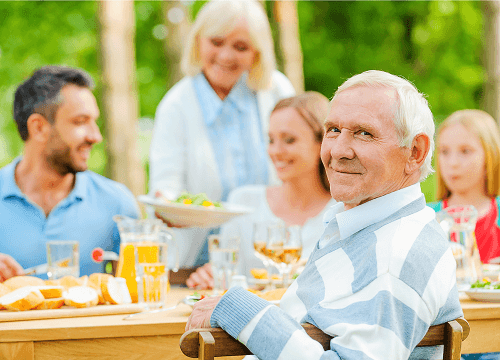For Americans, the holiday season is now in full swing with Thanksgiving just around the corner and Christmas and New Year’s Day on the horizon. But with the coronavirus pandemic continuing both in the U.S. and around the globe, many people – especially older people – have questions about what is and what is not risky during the 2020 holiday season.
It’s smart to stay aware. While COVID-19 cases had dropped at the start of the fall, the last fall months have seen the number of cases skyrocket again in many areas. What is and what is not risky can become harder to ascertain as different states adopt different rules.
Many people have become more aware of changes they can make to help themselves, from boosting their immune system to making diet changes that may lower the risk of coronavirus. But it’s helpful to look at tips for staying safe specifically for holiday occasions.
Advice From Doctors and Experts
The following tips come from experts in infectious disease, such as the Centers for Disease Control and Prevention and doctors interviewed by Harvard Health. Their thoughts on how they plan to conduct holiday get-togethers can help people decide what they will do to ensure the occasion is safe.
Make Use of Zoom for Grandparents

Dr. Rochelle Wallensky, professor of medicine at Harvard, had a typical response about her plans, saying “my Thanksgiving will be sadly small.” Plans call for only the doctor, her husband and two of her three sons (the other is living abroad) to attend the Thanksgiving meal. They will not have grandparents because Wallensky said “I do not believe they should/could safely travel.” They will instead visit via Zoom. Other experts also said that when it comes to older family members or those outside the household, they plan to visit via Zoom.
Don’t Rely On Testing Alone
A negative test is essentially meaningless before the holidays. If you test before the event, but then travel to be there, you could expose yourself to the virus during the trip (even if you travel by car and make stops along the way). The safest approach, according to Dr. Wallensky, is to quarantine for 10 to 14 days at the site of the holiday get-together before meeting each other. Also, the shorter the time of the get-together, the less chance of it becoming a spreader event.
Restrict the Guest List
Every doctor said they planned to hold the holiday only with people in their household who have diligently followed the rules on social distancing, mask wearing and other pandemic best practices. Combining the holiday with those from outside the household, including extended family, is problematic because it’s impossible to know where everyone at the table has been, and it just takes one person to spread the virus. The “outside the household” list includes those returning home from college who have not had the time to quarantine.
Dine Outdoors
If weather allows, doctors advise dining outdoors. Doctors have concerns about viral transmission indoors – case numbers have already shown that eating, drinking and loud talk in restaurants has been an effective spreader of the coronavirus. If Canada is any indication, that can also happen at holiday gatherings. Data from Ontario showed a steep rise in COVID cases after the Canadian Thanksgiving, according to Harvard Health.

Assessing Risk in Your Area
While media coverage for the coronavirus often assess the situation at the national or state level, doctors advise people to investigate conditions in their own area. City or county websites should report the total number of cases in your community and the percentage of positive cases. A rising number of cases and positive test percentages of 3% to 5% are red flags.
At the family level, consider if any family members have shown any symptoms or been in contact with a sick person. Those with conditions that put them at a high risk for serious complications should they catch the virus should carefully consider whether it would be better to wait until another time to see family.
There are some people who should not attend a holiday party, according to experts. They include those:
- Diagnosed with COVID-19 who have not yet met the criteria for when it is safe to be around others.
- Exhibiting COVID-19 symptoms
- Waiting for COVID-19 viral test results
- Who may have been exposed to someone with COVID-19 in the last 14 days
- Who are at an increased risk of severe illness from COVID-19
While the rules might seem onerous to some, they can help the nation keep infection numbers lower through the holidays. That way the country will move into 2021 with the virus under better control and with the promise of a vaccine on the horizon for 2021.
